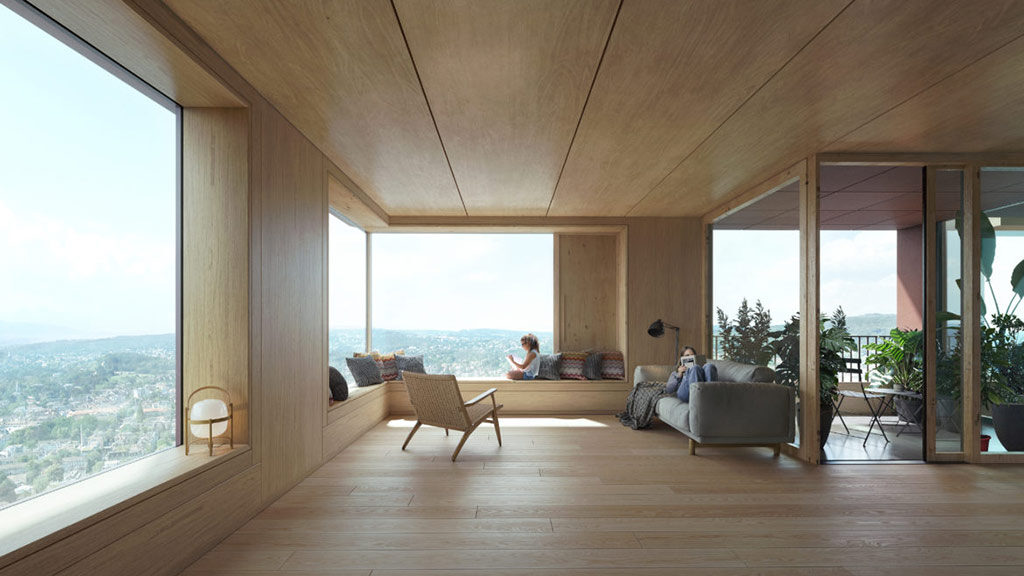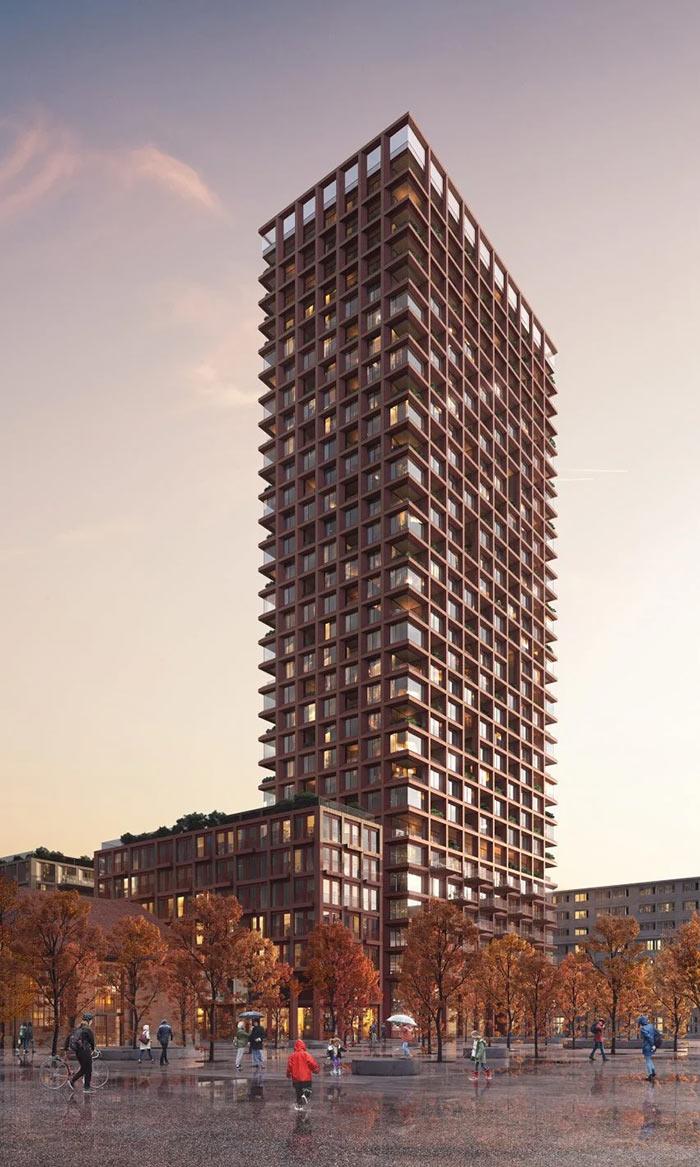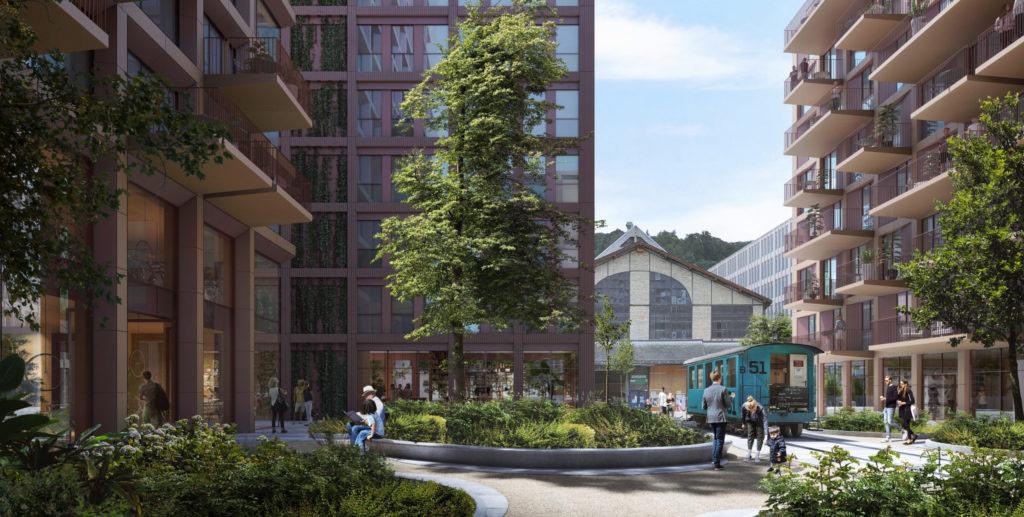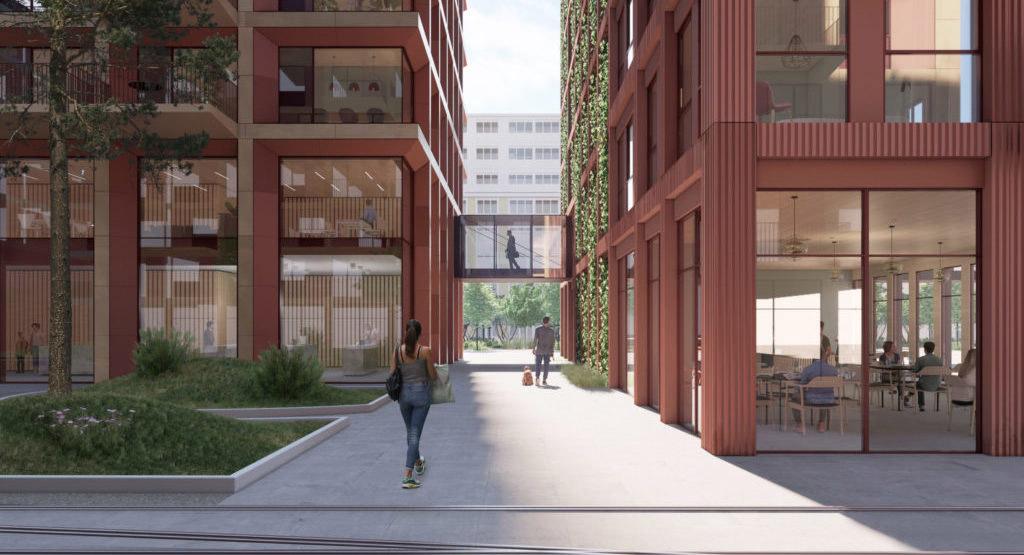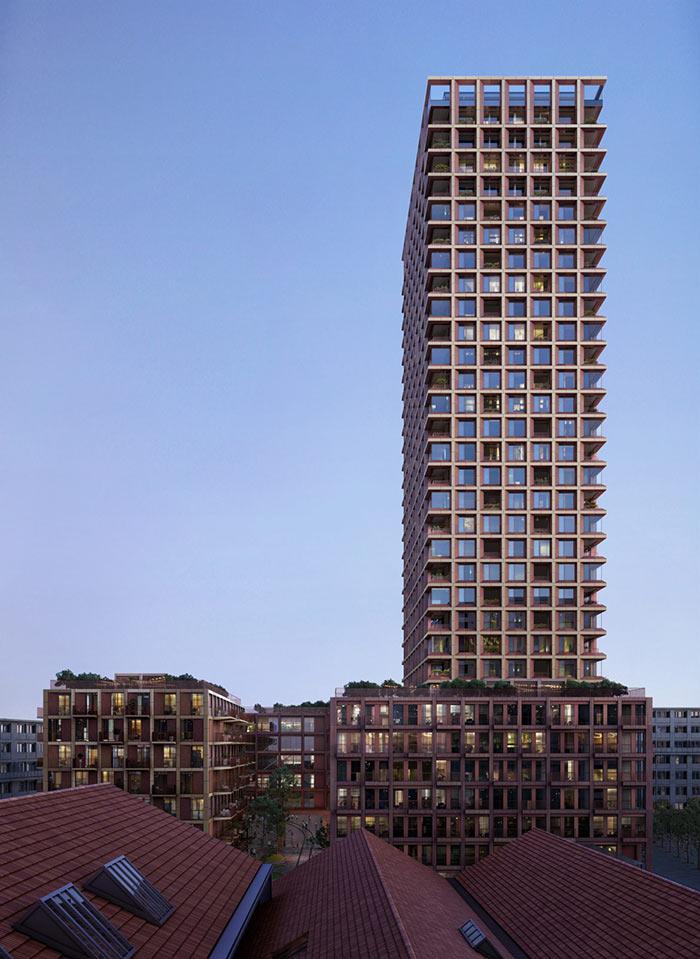Now that’s rocket science
There’s a rocket preparing to launch in Switzerland. The residential timber high-rise named Rocket in Winterthur’s Lokstadt neighbourhood will reach a height of 100 metres. The tower’s residents will be part of the 2000-watt society.
Where steam and electric locomotives were once manufactured, one of Switzerland’s first large brownfield sites emerged in the 1990s. Known as the Sulzer site, in 1995 it was slated to be the location of starchitect Jean Nouvel’s Megalou project. This plan fell victim to the real estate crisis, and a series of creative intermediate uses followed. Now the area is being transformed into a place that will set new standards for sustainable urban development in Switzerland.
Following intensive discussions with the City of Winterthur and with public participation, in 2015 the new master plan was approved by a significant majority in a referendum. In response, Swiss property developers Implenia organized an architecture competition and Danish architectural office Schmidt Hammer Lassen emerged as winner.
Driving modern urban development
In reference to the area’s history, the development has been given the name Lokstadt. All the buildings in this new neighbourhood bear the names of the locomotives that were once built here: Krokodil, Tigerli, Roter Pfeil, Elefant, Bigboy and Rocket. These exemplary construction projects underway all around Dialogplatz are intended to be the engines driving a new age of sustainable urban development. Developers and architects are looking to implement a major portion of the new Lokstadt district using structural timber construction.
The Rocket aims to push the structural limits of timber hybrid construction. It is indeed a residential building that – as the name implies – aims high. With its planned height of 100 metres, the developer says that it is “the tallest timber residential structure being planned anywhere in the world”. This is a title that other towers have claimed as well, including Woho Berlin, The Dutch Mountains in Eindhoven, and the 180-metre timber construction project undertaken by the software giant Atlassian in Sydney.
A 2000-watt site
It is already certain that the Rocket will be a Lokstadt landmark. And Lokstadt is destined to be a new green flagship project for the former industrial city of Winterthur. Adrian Wyss from Implenia emphasizes: “Timber is also excellently suited to major projects in urban settings.”
Above and beyond its choice of the wood as a renewable construction material, Lokstadt is pursuing a holistic sustainability concept: the entire district is to be certified as a 2000-Watt Site. In Switzerland, the primary per capita energy consumption is currently approximately 5,000 watts. The goal of the 2000-watt society is to return to the energy consumption levels of the 1950s. If possible, without reducing the standard of living.
The concept of a 2000-Watt Site takes an integrative view of the entire site rather than individual buildings.
“2000-Watt Site”, Swiss environmental certification
This Swiss quality seal is not based on a one-off assessment, but rather on long-term evaluation that extends beyond the lifecycle of individual properties. In other words: “The concept of a 2000-Watt Site takes an integrative view of the entire site rather than individual buildings.” By assessing the site as a whole, it is possible to achieve significantly greater impact than with multiple independent structures.
Fit for climate change, equipped for the future
To ensure that the new district is as well prepared as possible for the impacts of climate change, urban planners and developers commissioned a climate analysis. Its findings are to be implemented in the development of this district. For example, the close proximity of the structures being built creates more areas of shade at ground level. A similar kind of planning is also found in old parts of towns and cities.
In addition, roofs are to be turned into green biotopes, which further contributes to cooling the microclimate. Another approach is maximizing unsealed areas, allowing trees, bushes and water to regulate the climate in summer.
Residential construction as co-creation
The 32-storey Rocket tower will contain 93 rental apartments and 93 owner-occupied apartments. A new form of urban living is the recognized goal of this project, with timber construction, the combination of different uses, and customized planning. The base of the high-rise will be occupied by commercial spaces, social living, and a hotel. Rocket and its neighbouring structure, the seven-storey Tigerli, are scheduled for completion and occupancy in 2026.
The co-creation procedure involves the development of living spaces in a dialogue between providers and customers. Furnishings, layouts and value for money can therefore meet customers’ requirements to the greatest degree possible in advance. This was the basis for development of two living concepts: “Smart” for compact living spaces with flexible walls, and “Classic” for spacious owner-occupied apartments with loggias.
While tenants in “Smart” apartments have smaller living areas, they also have the opportunity to rent a co-working space in the building. Now that really is Rocket science.
Text: Gertraud Gerst
Visualizations: Ina Invest/Implenia
